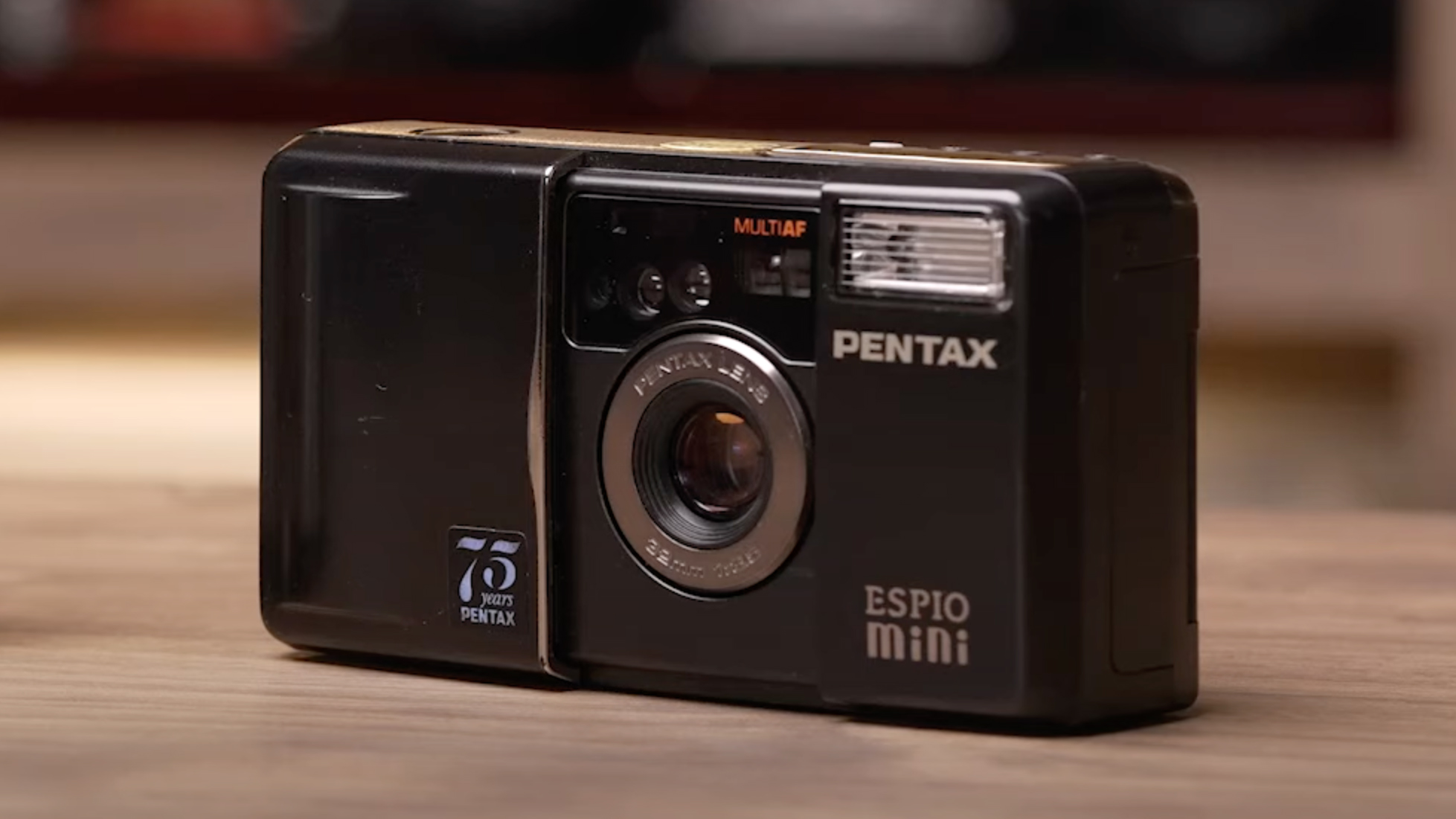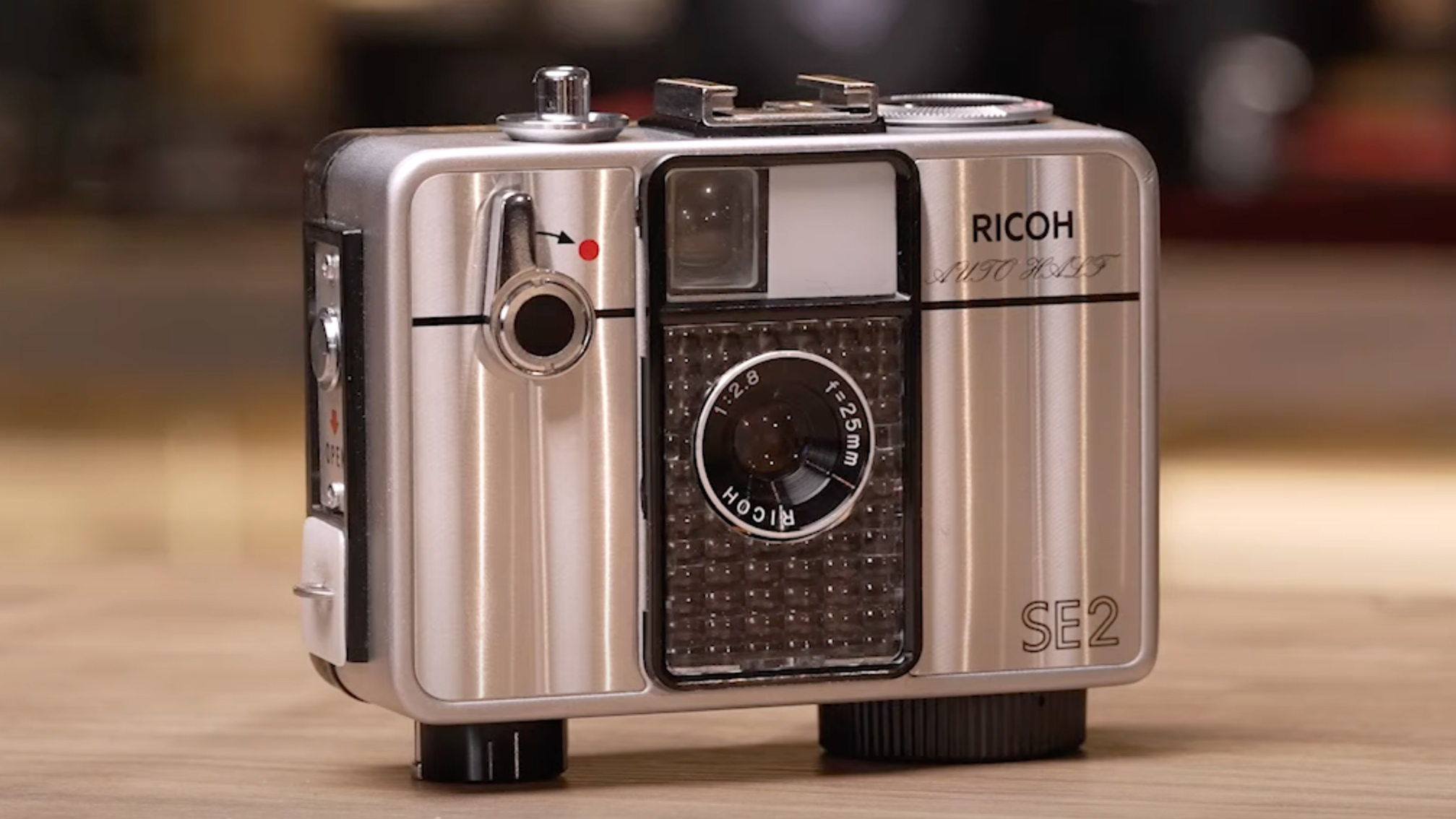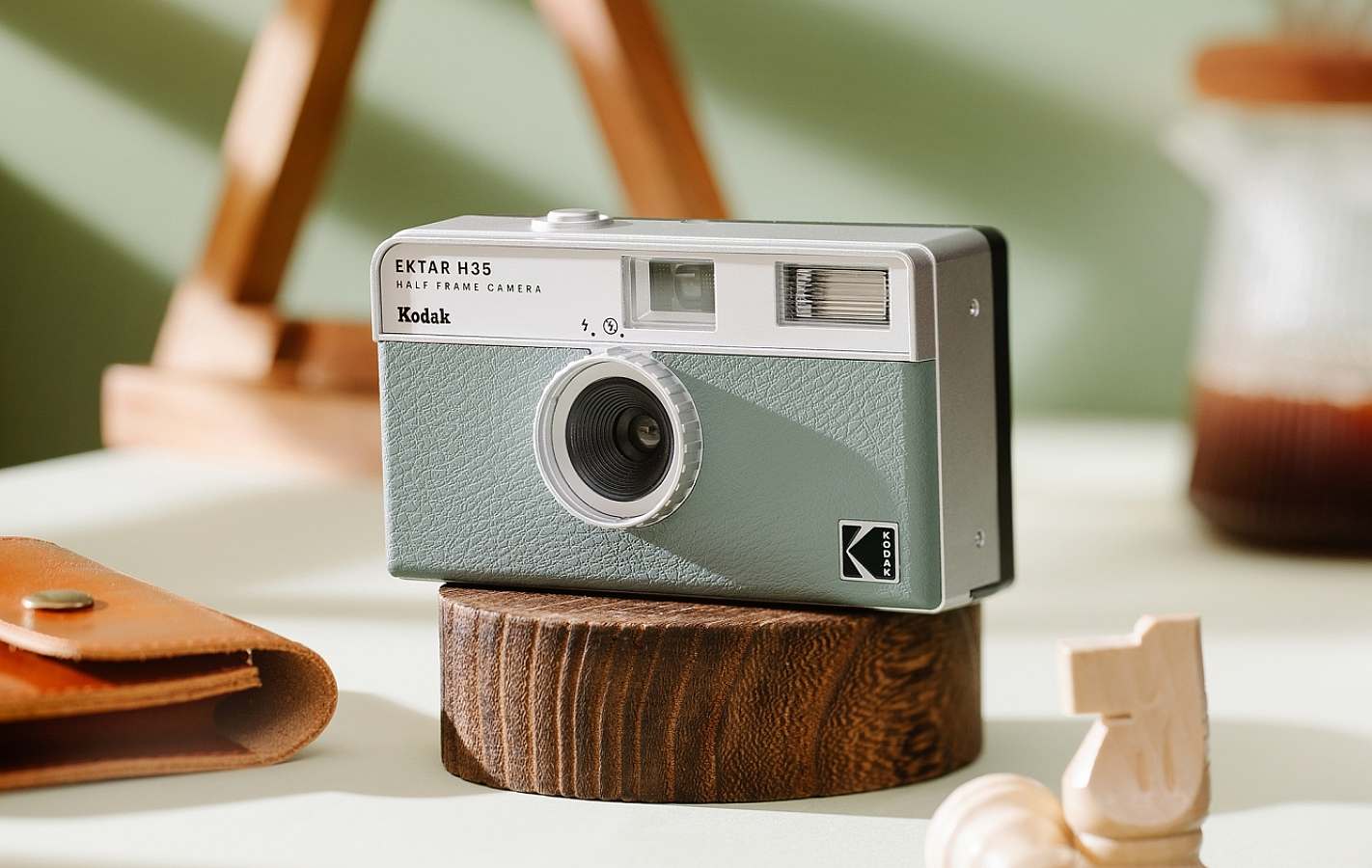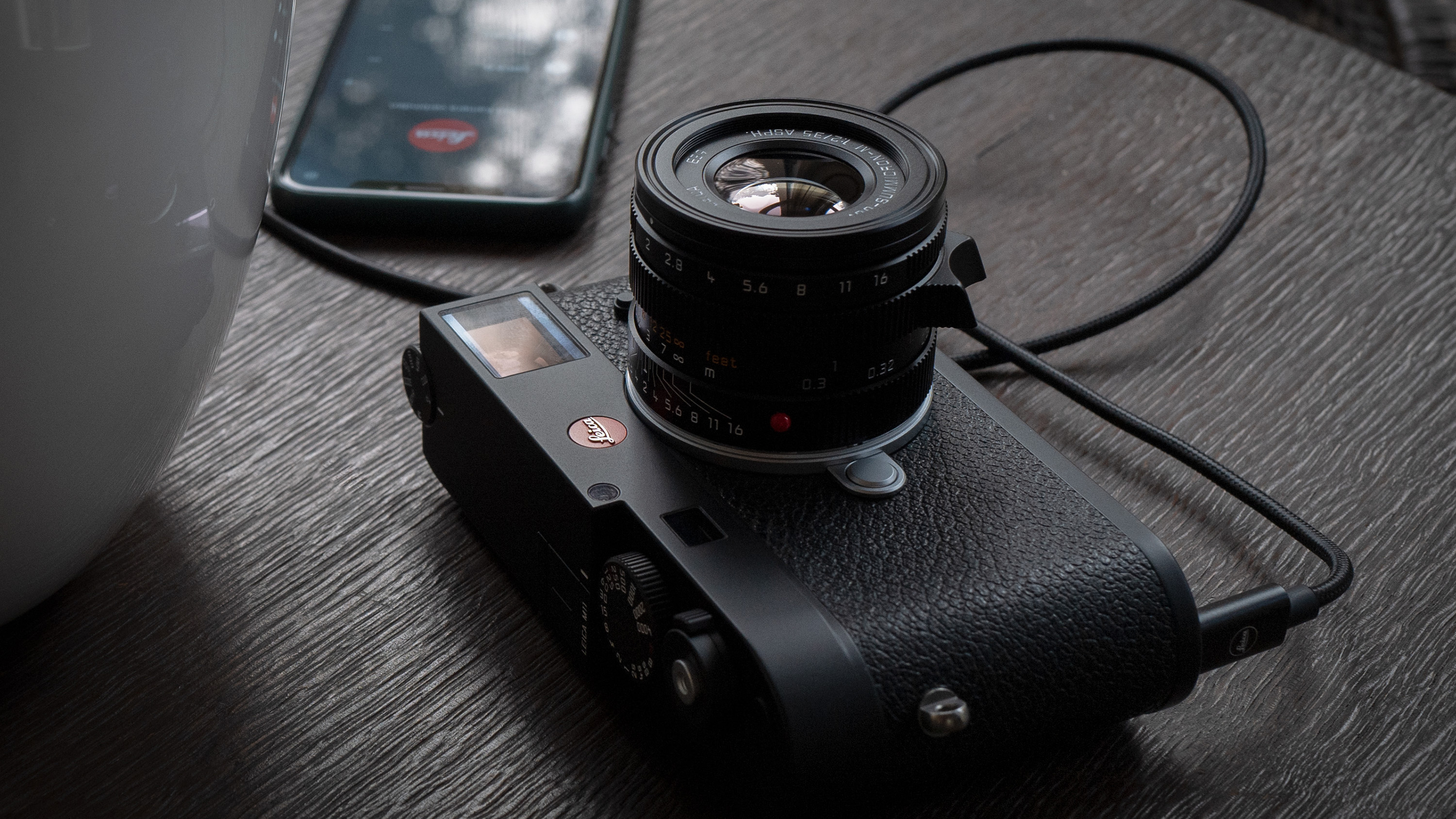Film cameras are back – and Pentax’s new compact could soon suck you into the analog revival
Pentax's new film camera is finally close to launch

- Pentax's new film camera will finally launch in mid-2024
- It'll be a half-frame compact with both electronic and manual controls
- Its lens will be based on the Ricoh Auto Half and Pentax Espio Mini
Pentax's new film camera has taken a suitably long time to develop, with the project first announced way back in 2022. But if you've been hankering after an analog sidekick that isn't your family's dusty old SLR, we have good news – Pentax's unnamed camera will get a full launch in mid-2024.
The news came in an update shared on YouTube (below) by Pentax's parent company Ricoh. In the video, the camera's designer Takeo Suzuki says that the project has now reached "the next stage of product development" and that the company has "finished assembling a prototype", which he's used.
While the video doesn't reveal a launch date for the camera, Pentax told Petapixel that its launch schedule is "projected for summer 2024". We don't know if that's when the film camera will be fully announced or if that's when it'll go on sale. Either way, the camera is finally heading towards production – and it's such a passion project that even retired Pentax engineers have apparently gotten involved.
Fortunately, the video also tells us a lot more about what kind of film camera this is going to be. Diehard film photography fans may be disappointed to learn that it isn't going to be a reborn Pentax K1000 SLR, but rather a compact film camera in the spirit of Kodak's Ektar H35... only a lot more interesting.
Why a half-frame camera?
One thing that Pentax's new film camera and the Ektar H35 will have in common is that they're both 'half-frame'.
As that name suggests, these cameras use standard 35mm film but only use half of the frame. Their golden age was in the 1960s with cameras like the Olympus PEN series, but Pentax says it's chosen the format for a few practical reasons – even though it's never actually made one before.
First, Pentax says that vertical-format photos chime with today's smartphone era and the aspect ratio of social media snaps. Despite its new camera using film, it sees younger photographers scanning and sharing the snaps digitally, too.
Get daily insight, inspiration and deals in your inbox
Sign up for breaking news, reviews, opinion, top tech deals, and more.
Half-frame should also, in theory, reduce the cost of shooting on film. "Compared to the peak of film photography, the price of film is much higher today,' Takeo Suzuki explained. "By designing a vertical-format camera, we figured that we could double the number of photos captured on each roll of film".
In other words, you should be able to capture 48 photos on a roll of 24-exposure film, or a massive 72 photos on 36-exposure film. Though that may also depend on your chosen lab's film processing skills.
What will it look like?
While we sadly didn't get a glimpse of the actual camera in the video, Pentax did reveal a few promising details about its design.
Unlike simpler remakes like the Kodak Ektar H35, Pentax's camera will give you a mix of electronic and manual shooting controls. There'll be an electronic shutter, automatic controls for aperture and shutter speed, and potentially also a mode dial to choose your shooting mode.
For focusing, you won't get anything as modern as autofocus, with Pentax's camera instead schooling you in the art of 'zone focusing'. Zone focusing, which has long been popular with street photographers, is where you set your camera's focus to a certain distance away – using the lens's focus ring – and wait for subjects to enter that zone.
This is also how it'll work on Pentax's new film camera. But Takeo Suzuki says, "We would also like to incorporate a mechanism that tells you the selected focus zone at a glance when you look into the viewfinder", which would be a nice touch.

Perhaps the best news for film nostalgists, though, is that Pentax's camera will also have classic film winding and rewinding. "We plan to recreate an old-fashioned winding mechanism used in past film-format SLR cameras', Suzuki says, that " works and feels exactly the way it was". Finish shooting a roll of film, and you'll also pull out the rewinding crank and turn it to wind the film.
What about the lens? Pentax says it's chosen one based on two of its most popular film cameras from the past. The angle of view is apparently inspired by the Ricoh Auto Half, which first launched in 1962. This had a fixed-focus 25mm f/2.8 lens, so it seems we can expect something similar on Pentax's new film camera.
The lens' optical design, meanwhile, is based on the Pentax Espio Mini. That little compact camera, which first landed in 1994, had a highly-lauded 32mm prime lens, with three elements in three groups. Suzuki claims the Espio Mini "was acclaimed as a masterpiece by many fans in the past" and the combination of the two cameras certainly sounds promising.
Analysis: A passion project for film beginners
When Pentax first announced its film camera project back in 2022, many started dreaming about a reborn Pentax K1000 – which, to be fair, is one of the best film cameras ever made. But Pentax has clearly gone down a different route, courting younger photographers with a half-frame compact, and that makes perfect sense.
After all, the film camera revival has largely been sparked by Gen Z, with Instagram and TikTok flooded with hashtags devoted to grainy, vintage film photos. The only problem with this comeback is that it's also driven the cost of film through the roof, with some popular stocks tripling in price in recent years.
Fortunately, there are still ways to shoot film on a budget, with one of those tactics being to get a half-frame camera – like Pentax's new model – and another being to choose popular, consumer-grade stocks from the likes of Kodak and Ilford in bulk. But it'll be interesting to see if Pentax also has any tactics to help ease this situation when its new film camera finally launches in a few months.

While it's still too early to say how much we'll like this new film camera, it certainly sounds like it has a promising combination of ingredients. Cheap half-frame cameras like the ubiquitous Kodak Ektar H35 (above) cost around $65 / £50, but Pentax's new model sounds like it'll be a lot more interesting with a price tag that's hopefully not drastically higher.
The combination of beginner-friendly automatic shooting modes with the tactility of zone-focusing sounds wise, as does the combined optics from the Ricoh Auto Half and Pentax Espio Mini (two highly respected film cameras from the past). Pentax certainly has the heritage to pull off a fun little film camera, and I'm looking forward to trying it out.

The question is whether it could also inspire other camera giants like Nikon, Fujifilm, and OM System to join the analog revival. Takeo Suzuki certainly hopes so, stating that "I also wish that other camera manufacturers would follow suit and enter the analog camera market".
Leica is already there with cameras like the M11 (above), which I previously dubbed a "glorious relic in an age of camera phone convenience". And the phenomenal recent success of the film camera-inspired Fujifilm X100VI shows that analog design is having a big moment.
Hopefully, Pentax will give us something that's a little more affordable than those modern classics, but also a little more authentic than recent film camera cash-ins.
You might also like

Mark is TechRadar's Senior news editor. Having worked in tech journalism for a ludicrous 17 years, Mark is now attempting to break the world record for the number of camera bags hoarded by one person. He was previously Cameras Editor at both TechRadar and Trusted Reviews, Acting editor on Stuff.tv, as well as Features editor and Reviews editor on Stuff magazine. As a freelancer, he's contributed to titles including The Sunday Times, FourFourTwo and Arena. And in a former life, he also won The Daily Telegraph's Young Sportswriter of the Year. But that was before he discovered the strange joys of getting up at 4am for a photo shoot in London's Square Mile.